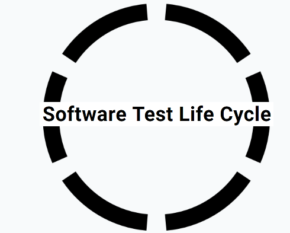Software Test Life Cycle
STLC Software Test Life Cycle is the standard, step by step procedure to test a new software. If you are from the field of development you should also know SDLC, STLC is a part of SDLC.
STLC Phases in software Testing
1. RC- Requirement Collection
What is requirement analysis in stlc?
First stage of STLC is called RC- Requirement Collection and System study, it consists of Customer requirements, usually the Project Manager will collect complete requirements of the product and explain it to the Technical Team, including the testers and developers.
2. Test Plan
What is test planning in stlc?
2nd stage of STLC is Test Plan that includes all future testing related activities, for example how many testers needed for this work and which testers would work on which modules, how many days required to finish these testings, which Bugs tracking tool will be used for this release, which automation tool will be used for this release.
3. WTC- Write Test Cases
Under WTC we have multiple stages:
What is environment setup in stlc?
System Study– This system Study will be done by individual Test Engineer, suppose there are 3 Modules A,B & C assigned to 3 Engineers, they will study and try to understand the particular Module assigned to them.
In this stage each individual tester will identify the scenario for the module assigned to him, for example if he is assigned the Login Module, he will identify all possible scenarios for Login Module.
WTC– Write Test Cases- In this stage the test engineer writes the test cases of all possible module.
Review– this stage tester review the test cases
FRC– Fix Review Comments- in this stage tester will fix review
Approval– After FRC done Tester will get the approval.
Repository– this is the last stage here Tester will store test case in Test case Repository tool.
4. Traceability Matrix- Cross Reference Matrix
What is Traceability Matrix in Software Testing?
Who Prepares traceability Matrix?
Write Traceability Matrix- Cross Reference Matrix, here tester will prepare the document to ensure each requirement has got at least one test case. If any requirement didn’t get not a single case then it will be marked as failed and it needs to work this particular requirement further. There are three types of TM Tracability Matrix ;
What is the use of Traceability Matrix?
Forward Traceability matrix or Horizontal Traceability matrix- here we ensure if each requirement has got at least one test case. It is done before our test case execution, once its done we will do Test case execution, here we ensure are we doing product right.
Backward Traceability matrix or vertical Traceability matrix – here we map the test cases to the requirement, here we ensure if the scope of requirement is not changing, what are the requirement given by customer, same thing developer are implementing. BTM should be prepared once software test implementation is done.
What is Bi-Directional Traceability matrix?
Bi Directional Traceability matrix- it’s the combination of both Forward Traceability matrix and Backward Traceability matrix.
5. Execution
Test Execution Phase in STLC
Once all these Traceability matrix done, next stage in STLC is Test Case Execution. Here we will be having set of test cases and customer requirements with us. We will compare requirements with test cases and based on results we will mark the test case passed or failed. Defect Tracking: If the features and functionalities not working according to customer requirement then Testers will raise Defect tracking.
6. Test Case Execution Report
What is Test Case Execution Report?
This report will be prepared by Test Lead. It includes which test engineer involved in which particular module testing, how many Bugs were found, how many test cases are in the Passed status and how many in Failed status. Finally, it will show a percentage of the passed & fail results, in a detailed report of Test Execution.
7. Retrospective Meeting
What is test closure in stlc?
This meeting conducted by Test Manager, inviting all the test engineers involved in this testing. He will discuss the whole process with them in detail, considering achievements, failures and corrective actions related to the whole testing.
